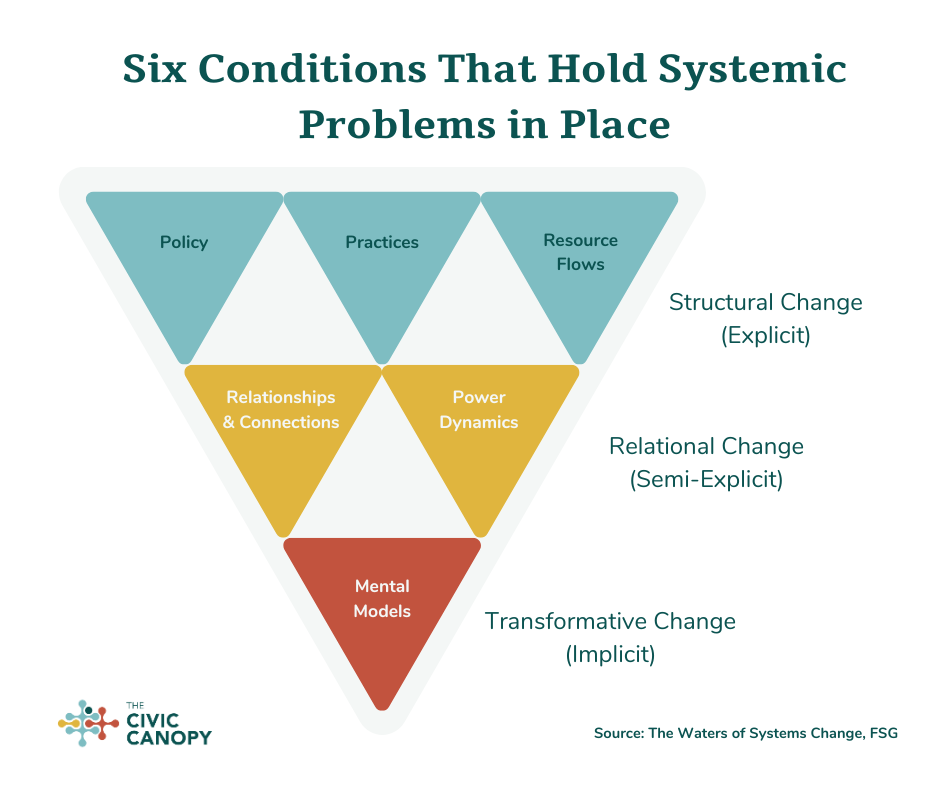The Food Justice Funders Collaborative began with the seed of a great idea. If we could just get all the food funders together, in a single meeting, we could leverage our expertise and funding to ending hunger in Colorado. But the reality can be a little clunkier. From finding a shared time that a group of funders can meet to figuring out what you do once you’re in the room together, let alone end hunger.
The Food Justice Funders Collaborative wasn’t the first to try this and it won’t be the last. The following case study shares some of our key learnings supporting this group to identify their purpose and start working together because we think it could be helpful to other groups facing similar challenges at a starting point.
In this case, the Blueprint to End Hunger (BEH) had started the group but hadn’t gotten quite enough traction to solidify a purpose that could guide the work. Since 2019, BEH has served as a statewide network of partners seeking to transform Colorado food systems. There was disagreement on what the purpose of this group should be. Was it an information-sharing group where everyone let each other know about upcoming funding opportunities? Or was it a group that did something together?
When the Civic Canopy (TCC) began facilitating this collaborative, we used the “expiration date strategy” to reengage the group to see what was possible. The expiration date strategy invites a group to a time-limited exploration. The invitation was to agree to a set of 3-4 meetings to what is possible when this group works together. At the end of that period, they will decide if there’s a “there there.” If this group agreed that there is something greater for them to pursue collaboratively. If the group decides there is, they continue meeting and working together. If they decided not to, they spent 3-4 meetings getting to know the perspectives and viewpoints of each diverse organization but ultimately decided that their interests didn’t align.
We planned four meetings around the natural stages of development that teams go through according to psychologist Bruce Tuckman. The four stages are:
- Forming
- Storming
- Norming
- Performing
In the first stage, the momentum of a new effort can help a group take some initial action together. The group may have a sense of purpose based on a charismatic person who gathered them or a specific call to action that they could get behind.
But after that initial success, groups often go through a phase of storming. There may be different understandings of the group’s purpose or a lack of clarity around what the group should do beyond the first action they took. There may be different personalities who show up and have different needs from the group. During this phase, actual action stalls.
Until the group moves into norming– where the group members can start defining how they work together, who takes on what roles, and what their mission is. When a group has effectively normed, they move into performing.
Dreaming
During our first meeting, we started with an activity called Head, Heart, and Hands to share what we liked learning about, what we were passionate about, and one thing we could do with our hands or our physical body. We used this activity to create a shared understanding of each person’s strengths and what they could contribute to the group. Then we had each member draw a picture of what could be possible with all these partners at a table together that wouldn’t be possible otherwise. From these activities, we got the sense that there was a real appetite for change in the food system in Colorado.
Forming
During the next meeting, Forming, the members were able to agree as a group that they wanted to work on systems change. That’s the little triangle image here. It’s FSG’s model of systems change that outlines all the different levers that need to be pulled to create systems change.
Using this as the framework, the group started to generate ideas for what they would do. TCC asked folks to fill in the blank, “Together we will…” We gave everyone different prompt words that could help them fill in the blanks. Their sample choices were things like elevate, create, fund, design, or destroy. Folks could use these words as a jumping-off point. Then everyone could vote using the little dots on the ideas they liked the best. This gave us our draft of what we would work on.
Storming
Naturally, the group needed to go through the storming stage next. To do this we took the top ideas from the voting and asked the group to consider each idea, by questioning: what’s the potential benefit of working on this and what’s the potential drawback of doing this? For example, one idea the group had was to financially support the work of the collective impact group and then they would financially support organizations within that group. The benefit of this would be that people working collectively to make sure everyone in the state was fed would know best where they needed funds to go. The downside was that the collective impact group would become a gatekeeper where anyone who wanted to work on food issues had to go through them to get funds rather than having an individual relationship with a funder.
We used the Fist-to-Five decision-making method to arrive at a full consensus about the purpose and focus of the group. Going through this stage allowed the group to arrive at 5 strategies and a vision statement that they could stand behind:
Purpose
The Food Justice Funders Collaborative is a dedicated group of funders convened by the Blueprint to End Hunger that works together to create change in Colorado’s systems to promote food sovereignty.
5 Focus Areas
- Intentionally supporting the financial needs expressed by the community which may include supporting Blueprint operations and workgroup projects.
- Proactively coordinate and leverage community-driven funding and capacity-building activities to both maximize impact and strengthen connections and reduce silos and duplication within the food funder network.
- Acknowledge racial injustices in the food system and work to address them.
- Understand equitable collaboration and ensure that communities are celebrated for that, and not made to compete against each other.
- Changing power dynamics through developing trusted relationships with the community will shift resource flows over time to create a lasting impact in Colorado communities.
Norming
During the fourth meeting, Norming, we adopted a set of norms for what meetings would look like and how the group would move forward including new members, establishing a culture of collaboration, and taking action.
Next Steps
In the end, the group then voted to stay together and keep working. They’ve been working together for the past year taking stock of the current funding landscape, sharing challenges and learnings for embodying equity in funding, and doing a deep dive into understanding microgranting. Like most coalitions, their progress hasn’t been linear, but the expiration date strategy and dreaming-forming-storming-norming sequence launched them into their next phase where collective action became possible.



